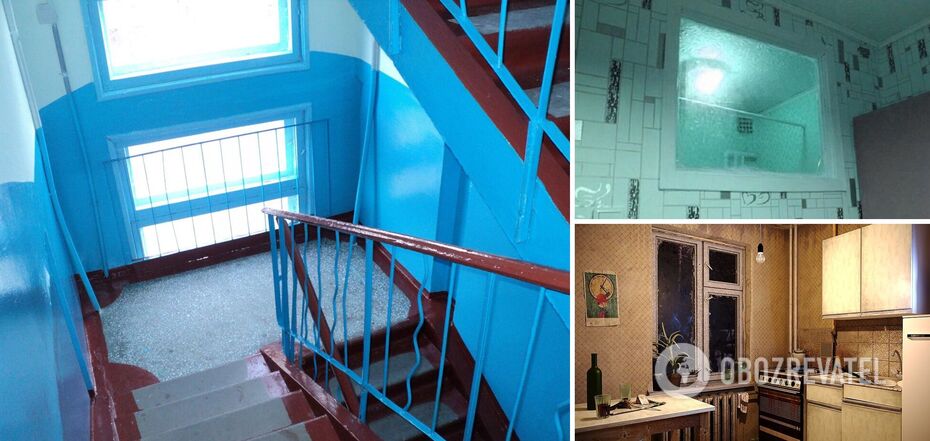Life
Mother-in-law's room and a window in the bathroom: what things in Soviet apartments now seem wild
Despite the fact that some people still tend to romanticize the Soviet past, it was, in fact, an era of poverty and a lack of respect for human dignity and comfort. A vivid example of this is the housing that was built in the USSR. And we're not even talking about communal housing, where several families had to share square meters. They were often built in pre-revolutionary houses. We are talking about private housing designed in the Soviet era.
Some of the features of Soviet apartments may seem like real savagery to the modern generation. And OBOZREVATEL talks about the main ones.
Blue and green entrances
Even now, in some old houses, you can find yourself in an entrance that causes a feeling of discomfort with its blue or green coloring. Painting the common house space in these colors began after World War II. At that time, they were the most affordable, as they were used to paint military equipment, trucks, and agricultural machinery. Dark oil-painted walls also helped to visually hide construction defects, such as uneven walls, etc. It was also believed that in the event of a fire and smoke, it would be easier for people to navigate these walls to get out.
Stairs painted on the edges
The habit of covering the edges of stairs with paint also comes from the USSR. The painted surface was easier to clean and wash. However, when wet, it became slippery, so the space in the middle of the step was left free of paint.
The front door to the apartment that opens inward
Under normal circumstances, the front door should open into the entrance hall. It is more convenient and safer. But when it comes to the so-called Khrushchev buildings, they were built so tightly that there was simply no option to open the door outward. This way, you could block the neighboring entrance or hit someone coming down the stairs. Again, fire safety was the argument for this decision. In the event of a fire, such doors could be knocked out. But the ones that opened outward would have to be cut down from the hinges.
The window between the bathroom and the toilet
The purpose of these windows (and there was another one from the toilet to the kitchen) is still debated. One of the main versions claims that they were made for security purposes. Toilets and baths in Soviet homes were very small, and doors and locks were of poor quality, so a person could be locked inside. There was no option to break down the door because it also opened inward and could injure a person. That is why these narrow windows were allegedly made. They also served as an additional source of light because during the Soviet era, there were frequent power outages.
A niche under the window
The recess in the wall under the window was invented at a time when Soviet citizens did not have access to household refrigerators. This niche could partially fulfill its role in winter. Later, central heating radiators were also installed there.
Tiny kitchens
Even a very small apartment can be made comfortable with a good layout, in particular, the placement of a kitchen with a dining area. But this is definitely not the case with Khrushchev and other Soviet buildings. The nook for cooking was not given much importance, so very little space was allocated for it, and no care was taken to ensure comfortable proportions. A fairly tall man standing in the center of such a kitchen could reach each of the walls with his hands and even reach the ceiling.
"Mother-in-law's room"
Speaking of cramped spaces. In some two-room variants of Khrushchev houses, you can find a narrow windowless room that can be accessed from one of the rooms. It was supposed to serve as a wardrobe. But over time, it suffered the same fate as the balconies - all sorts of junk and cans of preserves were thrown in. Such desirable food during the years of food shortages was often supplied by relatives from the village, such as the parents of the apartment's residents. That's why the room was ironically called the "mother-in-law's room."
Parquet in squares
Soviet builders inherited the classic method of laying French herringbone parquet from pre-revolutionary times. But it requires a lot of wood and takes a long time to lay. That's why this method was quickly abandoned, and the floor was covered with cheaper square wooden tiles.
Earlier, OBOZREVATEL talked about three bad habits originating in the USSR that are long overdue to be broken.
Subscribe to OBOZREVATEL's Telegram and Viber channels to keep up with the latest developments.



























